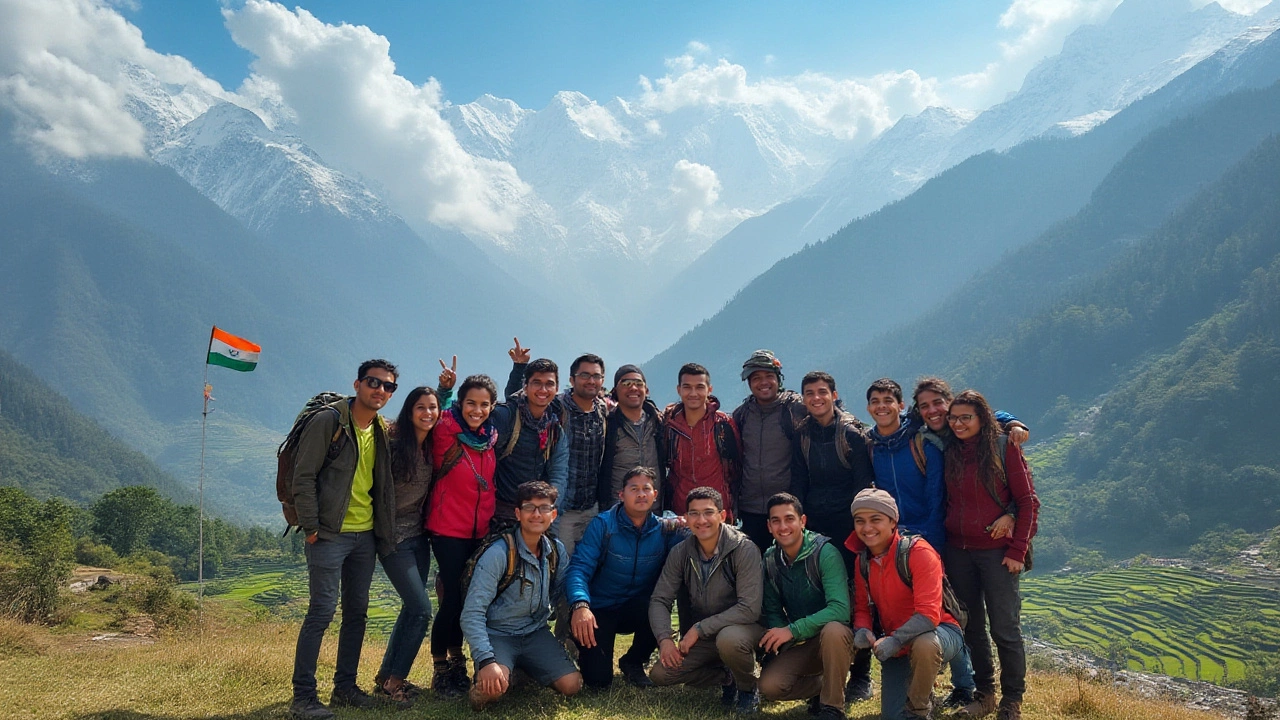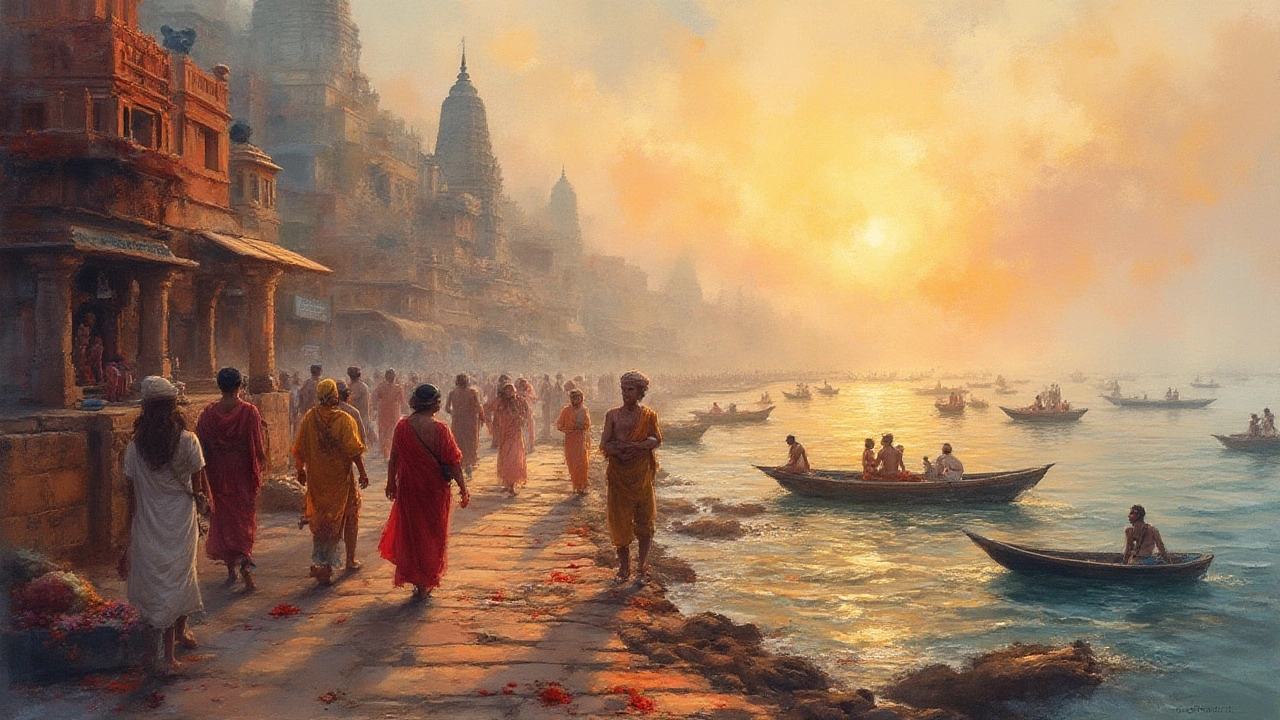If you’ve ever landed at Indira Gandhi International Airport and wondered where all those wide-eyed backpackers and selfie stick-wielding travelers are heading, you’re not alone. India is a magnet for globetrotters—around 17.9 million foreign visitors in 2024 alone. But they don’t just drop a pin on Google Maps and blaze a random trail. Certain cities and regions have a magnetic pull that draws folks from Tokyo, Berlin, Sydney, and everywhere in between. Some chase history, others are in it for the food, and a few might just follow social media trends (or yoga instructors) right to the country’s hidden corners.
The Golden Triangle: Still the Star Attraction
Start typing “best places to visit in India” and you'll see a familiar pattern. The so-called Golden Triangle—Delhi, Agra, and Jaipur—comes up every time, and there’s a reason. This trio is the holy grail for foreign tourists. We’re talking more than 40% of visitors checking off at least one Golden Triangle city. Why? Let’s see.
Delhi is usually the entry point. It’s a collision of old and new: Mughal-era forts, street food that can burn through steel, trendy cafés in Hauz Khas, and swanky malls. The Red Fort, Qutub Minar, Humayun’s Tomb—all UNESCO World Heritage Sites—top every itinerary. Foreigners dig the bustle, the “organized chaos,” and yeah, shopping for pashminas in Chandni Chowk.
Agra is next for obvious reasons—the Taj Mahal isn’t just an Instagram background; it’s a bucket-list icon. But foreigners are starting to explore beyond the white marble mausoleum. Fatehpur Sikri, Agra Fort, and the lesser-visited Mehtab Bagh (the perfect sunset Taj view) are getting love these days.
Jaipur, the “Pink City,” rounds off the Triangle. Everyone wants photogenic Amber Fort, City Palace, and Hawa Mahal on their feed. But what’s shifting is the interest in local workshops where foreigners try block-printing or flying kites with locals—clearly, it’s not just about sightseeing anymore. It’s about soaking in the vibe.
| Golden Triangle Cities | % of Foreign Tourist Visits | Major Attractions |
|---|---|---|
| Delhi | 38% | Red Fort, India Gate, Lotus Temple |
| Agra | 34% | Taj Mahal, Agra Fort |
| Jaipur | 33% | Amber Fort, City Palace |
Goa, Kerala & Varanasi: The Classic Favorites
Ever wonder why half of Europe seems missing in January? Check Calangute Beach. Goa has a legendary status among international tourists, especially those from Russia, the UK, and Israel. Since the late ‘60s, Goa’s blend of sun, sand, nightlife, and faded Portuguese churches has been a beacon for everyone chasing tropical bliss. Foreigners come for the beach parties, but many stick around for yoga retreats, Portuguese cooking classes, or just the laid-back fishing villages in South Goa. There’s always something happening—from “silent parties” on Palolem to monsoon wildlife tours through the hinterland. A little quirky tip: Some travelers rent bikes in Margao, skipping taxis, so they can explore hidden coves that don’t even pop up on trip guides.
Kerala takes things slow—the “God’s Own Country” marketing works like magic overseas. For tourists, it’s all about the backwaters of Alleppey, ayurvedic massages, and spicy seafood curries. International visitors book houseboats months in advance. Kochi’s old Jewish quarter, tea gardens in Munnar, and Periyar wildlife safaris pull in nature lovers. There’s a stat from the Kerala tourism board that 18% of their guests in 2024 were from Europe or North America, and more than half of those came specifically for wellness experiences. Pro tip: If you time it with Onam or the snake boat races in August, you score on unique cultural vibes—and way fewer crowds.
Now, Varanasi. For anyone on a spiritual journey (or just out to witness life and death in one frame), this is a must-stop. The Ganga aarti ceremony leaves a mark on even the most selfie-obsessed traveler. Foreign visitors—especially those from France, Japan, and South Korea—are enchanted by the odd calm amid all that color and chaos. Other cities like Rishikesh and Dharamshala get some of Varanasi’s spiritual overflow, especially among yoga and meditation fans. If you come in February or March, you’ll bump into the Holi festival madness—expect your clothes (and camera lens) to be permanently rainbowed.
But here’s the quirky side: more travelers are sidestepping the crowds for smaller towns nearby, like Khajuraho or Sarnath, looking for mindful breaks with fewer tour buses and selfie sticks.

From Himalayas to Beaches: Adventure and Serenity Seekers
Foreigners aren’t just glued to historical monuments—there’s a whole brigade landing in India for trekking, rafting, or even paragliding. Himachal Pradesh and Uttarakhand are hotspots. Backpackers from Israel and Germany hit the trails from Manali to Leh, test their nerves on the Rohtang Pass, or hunt for apple orchards in Kinnaur. Interest in Spiti Valley has shot up 30% since 2022, thanks to glamping and eco-tourism. The Indian Himalayas aren’t just about snow-capped peaks; you’ll meet Norwegians learning Bollywood dance in Dharamkot, or Czechs brewing kombucha at hostels in Shimla.
Ladakh is another galaxy altogether. Among foreign tourists, it’s famous for its alien landscapes, turquoise Pangong Lake, and road trips with a Royal Enfield bike (rental tip: book a month early in peak season). The Hemis Festival and Buddhist monasteries attract visitors looking for insight, not just scenery. Thanks to movies, the Khardung-La pass is a rite of passage, especially for Australian, British, and Asian travelers.
The south, on the other hand, has its own fan base. Pondicherry, with its French quarter, draws backpackers who want croissants for breakfast and sambar for lunch. Some travelers head to Hampi, lost in boulders and ruins, for an “off-the-map” vibe. Surfing in Gokarna is picking up—especially with Aussies and folks from Spain looking to dodge Goa’s crowds.
You’ll notice a pattern: wherever there’s adventure, there’s a crowd of foreign faces looking both amazed and slightly sunburned. But hidden gems keep popping up—like Majuli island in Assam or the tea trails in Darjeeling—where early arrivals swap notes on WhatsApp groups so crowds don’t catch on too soon.
Trends, Tips, and Surprising New Hotspots for Foreign Visitors
The travel scene in India is shifting fast. Social media has changed the way foreigners pick their Indian adventure. Rajasthan's Jodhpur and Udaipur are trending not just because of heritage, but because their blue and white-washed lanes make for killer photos. Sikkim is having a moment, partly because the state is plastic-free and super clean—Japanese and Scandinavian tourists rate it highly for hiking and homestays. Mumbai and Bangalore also see short city breaks, especially among business or tech travelers tagging on an extra day for food tours or flea markets.
There’s this nugget: wellness travel is exploding. Kalari massages in Kerala, yoga in Rishikesh, and “digital detox” hills in Himachal are drawing travelers from the US and UK looking to log off. Culinary tours—whether it’s picking cardamom in a Kerala plantation or going on a spice walk in Old Delhi—are on the bucket list for food-loving tourists. Shopping for silver jewelry in Jaipur—a huge hit among French and Italian visitors—is on nearly every survey.
If you’re visiting soon, keep some tips handy. Train tickets, especially for overnight routes like Delhi to Varanasi or Mumbai to Goa, sell out weeks ahead—book early. Consider traveling during India’s “shoulder season” (February or September), when the weather is still solid but crowds are lighter, and prices drop. Always have a local SIM (easy at the airport) because e-wallets, ride-hailing apps, and train bookings are mostly digital now.
Watch out for lesser-known treasures: Khajuraho’s temples, Kutch’s salt flats, and Meghalaya’s living root bridges stayed under the radar for a while, but thanks to documentaries and YouTube, they’re now hitting wish lists. If eco-friendliness matters, Sikkim’s sustainable stays and Kerala’s responsible tourism projects get top marks in survey feedback from foreign nationals.
And the big twist? Even with “work from anywhere” trends, India’s slower destinations—where Wi-Fi might lag but sunsets last longer—are ending up on digital nomad blogs as the true place to unplug.
So, where do foreigners travel most in India? The old hotspots are still there, but the map is peppered with curious detours and fresh adventures. Every year, new cities and towns make their debut—usually after someone posts an epic reel and the world takes note.
